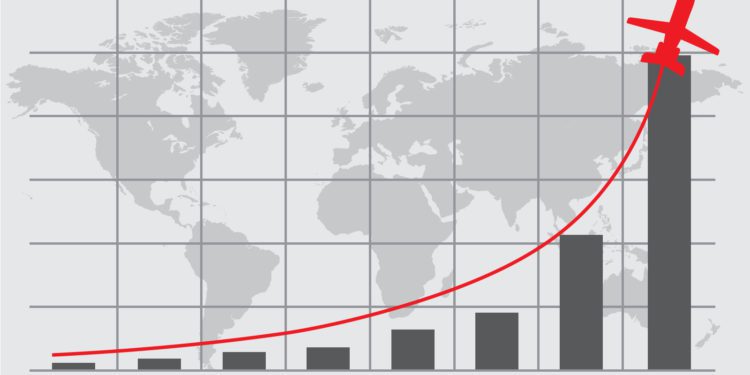Safety Management: Practical Drift and Your Flight Operation

The other day I was reading a gripping autobiographical speech delivered by a rather understated aviation icon. This individual experienced a stunning career in aviation, ranging from aerobatics to airline flying, and rubbed elbows with some of the most famous aviation icons in his time. Despite the many pointed stories, humorous anecdotes, and sage advice, there was one small line, very benign in nature, which stood out to me. He would talk about some of the things he had done in the course of his career that “would probably not be allowed today.”
1. How has training changed over the last century?
This line made me think of how things have dramatically changed over the years particularly aviation system designs. This includes aircraft, airspace, regulatory, and training systems, to name a few. In essence, an aspiring pilot today is trained to a much different set of processes and procedures that compose safer designed systems than the aspiring pilots of 75 years ago were. If one were to imagine a line on a graph, with y=0 representing the boundary between safe and unsafe performance, then early system ‘ideal’ performance may be represented by the line y=1, and today’s system ‘ideal’ performance could fairly be represented by the line y=100 (nominal, only to show comparison). In other words, today’s systems are designed to perform at a much greater level of safety. However, if performance begins to stray from what was designed, then the margin between ‘ideal’ and the safe/unsafe boundary decreases. This ‘straying’ is referred to as “practical drift,” and according to ICAO Doc. 9859, occurs even in the soundest of aviation companies.
2. What is practical drift?
ICAO defines practical drift as when “…operational performance is different from baseline performance.” Baseline performance is the performance expected upon initial deployment of the system and is based on three assumptions:
- The technology needed to achieve the system production goals
- The training necessary for people to properly operate the technology
- The regulations and procedures that dictate system and people behavior
Practical drift can also be expressed as the difference between “work as imagined” and “work as actually done” per Stian Antonsen in his book titled, “Safety culture: theory, method and improvement.” To put it into a limited operational context, imagine a company just acquired a G550 and sent two of its pilots to initial training at one of the major training centers. Assuming no further training was given, imagine the pilots’ initial performance at simulator training and checking (ideal) versus performance six months, 12 months, or even 18 months in the future (actual). The flight profiles, standard operating procedures, and requisite level of aircraft system knowledge are part of the design to produce an expected baseline performance. However, due to other factors, actual performance begins to stray, or drift, from the baseline. ICAO gives several reasons why the practical drift develops, but one that stands out in light of the above example is as follows: “Procedures cannot be executed as planned under dynamic operational conditions.” How many times were you able to fly base to localizer intercept with approach flaps and Vref +20 at a major airport?
Interestingly, Antonsen also credits the development of the drift to procedures that are created at a level far removed from operational reality. While the created regulations and/or standard operating procedures might look good on paper in an office and theoretically work to control risk, without feedback on their usefulness from frontline operators, these procedures will be “…less able to cope with challenges and unforeseen events.”
3. What’s the catch?
As presumed by ICAO, all organizations operate, to some degree, within the practical drift. Some may stray from baseline and then oscillate about a point a short distance from ideal. Others may vary more greatly, depending on changes in the organization, training and audit cycles, incidents, etc. Others yet may begin to deviate very slowly, almost insidiously at first, then accelerate quickly towards that boundary between safe and unsafe operation. The catch is to capture the drift prior to reaching the boundary. It would, however, be ideal to capture the drift at its inception, thus quickly returning to baseline performance. How is this done? Through monitoring of operations. Every day your organization operates, it is telling a story through data. The trick is capturing the right data at the right time. ICAO refers to these as “navigation aids” within the practical drift to help organizations navigate the “currents and obstacles.” Depending on the ‘navigation aid’ type, the operator can identify the drift and hopefully work to return the organization back to ‘ideal’ performance levels. This monitoring of operations to identify the drift is part of a mature SMS and with the right ‘navigation aids’ can keep performance close to baseline.
Conclusion
Practical Drift is a phenomenon where actual performance varies from ‘ideal’ or designed performance. ICAO states that the development of the practical drift is inevitable and can arise from a number of factors, including unrealistic procedures and technology that does not always operate as designed. The key, however, is to catch the drift in performance before it crosses the boundary between safe and unsafe operation.
Questions?
If you have any questions about this article, contact me at christinevamvakas@univ-wea.com.





